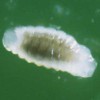Abstract
Trichopria columbiana is a parasitoid of Hydrellia fly species. Depending on the ecological role of the host species, it can have a positive or negative effect on biological control. Some Hydrellia species feed on the invasive aquatic weed hydrilla. After its introduction into the U.S. by the aquarium industry in the 1950s (Langeland 1996), various control methods, including biological control, were developed and used to manage infestations. Classical biological control studies were initiated in the 1970s, which led to the release of four insects in the U.S., two of which were the leaf-mining ephydrid flies, Hydrellia pakistanae and Hydrellia balciunasi. Despite successful establishment and range expansion of the Asian hydrilla leaf mining fly, Hydrellia pakistanae, population levels of the insect and associated plant damage have remained low. One of the potentially limiting biotic factors is parasitism by the native endoparasitic wasp Trichopria columbiana. This 6-page fact sheet was written by Byron R. Coon, Nathan E. Harms, Michael J. Grodowitz, Emma N.I. Weeks, and James P. Cuda, and published by the UF Department of Entomology and Nematology, June 2014.
References
Ashmead WH. 1893. A monograph of the North American Proctotrypidae. Bulletin of the United States National Museum 45: 1-472. https://doi.org/10.5479/si.03629236.45.1
Balciunas JK, Grodowitz MJ, Cofrancesco AF, Shearer JF. 2002. Hydrilla. In Van Driesche R, Blossey B, Hoddle M, Lyon S, Reardon R (editors). Biological Control of Invasive Plants in the Eastern United States, USDA Forest Service Publication FHTET-2002-04. Morgantown, W.Va.
Bennett AMR. 2008. Aquatic hymenoptera. In Merritt RW, Cummins KW, Berg MB (editors). An Introduction to the Aquatic Insects of North America, 4th edition. Kendall Hunt Publishing Company, Dubuque, IA.
Berg CO. 1950. Hydrellia (Ephydridae) and some other acalpytrate Diptera reared from Potamogeton. Annals of the Entomological Society of America 43: 374-398. https://doi.org/10.1093/aesa/43.3.374
Buckingham GR. 1994. Biological control of aquatic weeds. In Rosen D, Bennett FD, Capinera JL (editors). Pest Management in the Subtropics: Biological Control - a Florida Perspective. Intercept Limited, Andover, United Kingdom.
Buckingham GR, Okrah EA. 1993. Biological and host range studies with two species of Hydrellia (Diptera: Ephydridae) that feed on hydrilla. Technical Report A-93-7, United States Army Corps of Engineers Waterways Experiment Station, Vicksburg, MS.
Center TD, Cofrancesco, AF, Balciunas JK. 1990. Biological control of wetland and aquatic weeds in the southeastern United States. In Proceedings of the VII International Symposium on Biological Control of Weeds, 6-11 March 1988, ed. E.S. Delfosse. Istituto Sperimentale per la Patologia Vegetale, Ministero dell'Agricoltura e delle Foreste, Rome, Italy.
Coon BR, Harms NE, Cuda JP, Grodowitz MJ. 2014. Laboratory biology and field population dynamics of Trichopria columbiana (Hymenoptera: Diapriidae), an acquired parasitoid of two hydrilla biological control agents. Biocontrol Science and Technology (in press). https://doi.org/10.1080/09583157.2014.933311
Cuda JP, Fox AM, Habeck DH. 1997. Evaluation of biocontrol insects on hydrilla. In Stocker RK (editor). Final Report: Control Technologies for Use Against the Submersed Aquatic Weeds Hydrilla and Hygrophila. Center of Aquatic Plants, UF/IFAS, Gainesville, FL.
Cuda JP, Charudattan R, Grodowitz MJ, Newman RM, Shearer JF, Tamayo ML, Villegas B. 2008. Recent advances in biological control of submersed aquatic weeds. Journal of Aquatic Plant Management 46: 15-32.
DeBach P. 1964. Biological Control of Insect Pests and Weeds. Chapman and Hall, London.
Deonier DL. 1971. A systematic and ecological study of Nearctic Hydrellia (Diptera: Ephydridae). Smithsonian Contributions to Zoology 68: 1-147. https://doi.org/10.5479/si.00810282.68
Doyle RD, Grodowitz M, Smart RM, Owens C. 2002. Impact of herbivory by Hydrellia pakistanae (Diptera: Ephydridae) on growth and photosynthetic potential of Hydrilla verticillata. Biological Control 24: 221-229. https://doi.org/10.1016/S1049-9644(02)00024-5
Flanders SE. 1950. Regulation of ovulation and egg disposal in the parasitic Hymenoptera. Canadian Entomologist 82: 134-40. https://doi.org/10.4039/Ent82134-6
Grigarick AA. 1959. Bionomics of the rice leaf miner, Hydrellia griseola (Fallen), in California (Diptera: Ephydridae). Hilgardia 29: 1-80. https://doi.org/10.3733/hilg.v29n01p001
Grodowitz MJ, Nachtrieb JG, Harms N, Swindle R, Snell C. 2009. Parasitism and host selection behavior of Trichopria columbiana Ashmead and its effect on establishment and dynamics of Hydrellia spp. populations. ERDC/TN APCRP-BC-15. U.S. Army Engineer Research and Development Center, Vicksburg, MS. 10pp. (18 June 2014)
Grodowitz MJ, Smart M, Doyle RD, Owens CS, Bare R, Snell C, Freedman J, Jones H. 2004. Hydrellia pakistanae and H. balciunasi, insect biological control agents of hydrilla: boon or bust? In Cullen JM, Briese DT, Kriticos DJ, Lonsdale WM, Morin L, Scott JK (editors). Proceedings of the XI International Symposium on Biological Control of Weeds, 27 April - 2 May 2003. CSIRO Entomology, Canberra, Australia.
Grodowitz MJ, Center TD, Cofrancesco AF, Freedman JE. 1997. Release and establishment of Hydrellia balciunasi (Diptera: Ephydridae) for the biological control of the submersed aquatic plant Hydrilla verticillata (Hydrocharitaceae) in the United States. Biological Control 9: 15-23. https://doi.org/10.1006/bcon.1997.0513
Holm L, Doll H, Holm E, Pancho J, Herberger J. 1997. World Weeds: Natural Histories and Distribution. John Wiley, New York, NJ.
Johnson NF. 2014. Hymenoptera Online (HOL). Available online: http://hol.osu.edu/index.html?id=16972 (Accessed 28 May 2014)
Langeland KA. 1996. Hydrilla verticillata (L.f.) Royle (Hydrocharitaceae), the perfect weed. Castanea 61: 293-305.
Lawton JH. 1985. Ecological theory and choice of biological control agents. In Delfosse ES (editor). Proceedings of the VI International Symposium on Biological Control of Weeds, 19-25 August 1984. Agriculture Canada, Ottawa, Vancouver, Canada.
Wheeler GS, Center TD. 2001. Impact of the biological control agent Hydrellia pakistanae (Diptera: Ephydridae) on the submersed aquatic weed Hydrilla verticillata (Hydrocharitaceae). Biological Control 21: 168-181. https://doi.org/10.1006/bcon.2001.0927

